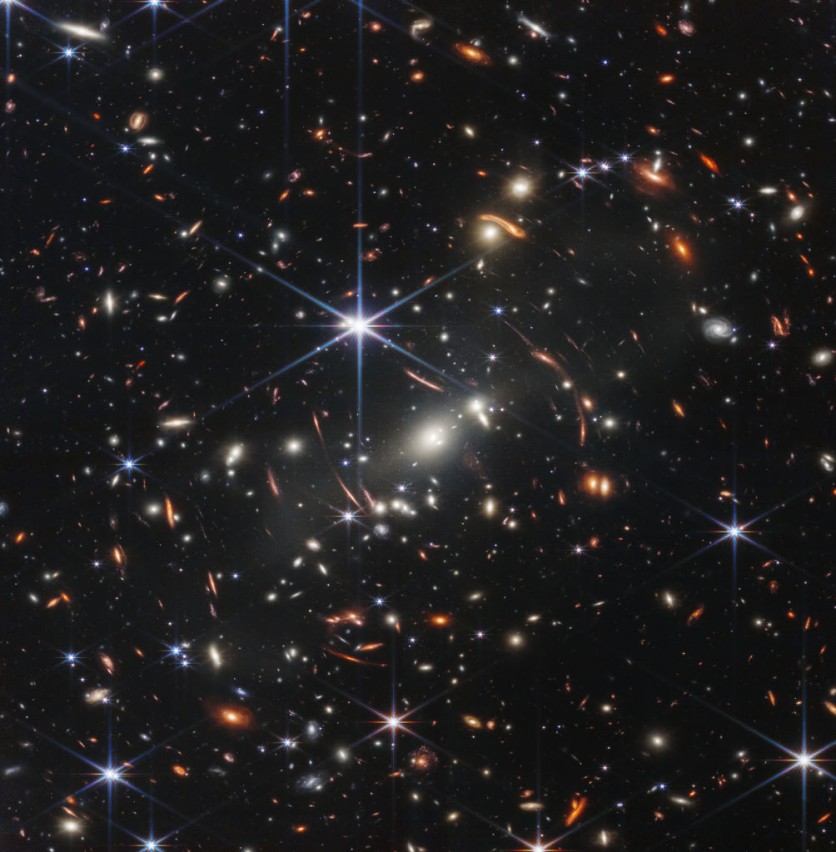In a cosmic game of "distance charades," NASA's James Webb Space Telescope (JWST) has just outperformed itself, determining the locations of 200 galaxies whose distances from Earth were previously unknown.
Cosmic Time Capsule
On July 11, 2022, JWST treated us to its inaugural masterpiece, the "Webb's First Deep Field" image. It's like a celestial selfie, capturing more than 7,000 galaxies, all striking a cosmic pose. This image isn't just a pretty picture. It's a cosmic treasure trove for astronomers studying the evolution of galaxies.
It's like peering into a cosmic time capsule, offering glimpses into how galaxies were born and grew up in the early stages of the universe. However, until now, these galaxies have been cosmic pen pals, intriguing yet mysterious in their distance.

Enter Dr. Gaël Noirot, a cosmic explorer from Saint Mary's University in Halifax, leading a global team of astronomers. They are part of the Canadian NIRISS Unbiased Cluster Survey (CANUCS), and they have embarked on a cosmic quest.
Armed with JWST's Canadian-made NIRISS instrument, they have not only discovered the addresses of nearly 200 galaxies but also measured how far they are from Earth.
It is like a cosmic game of "Guess the Distance," and they have got it down to a science. Now, you may wonder, how do you measure the distance of something that is impossibly far away?
Well, they've got a trick up their cosmic sleeves called "redshift." It is like a cosmic GPS that tells us how far these galaxies are based on the colors they are showing.
In their extensive catalog of galaxy redshifts, the scientists pinpointed three additional galaxy clusters situated at far greater distances than SMACS 0723. These cosmic clusters, potentially newfound, are positioned some eight to 10 billion light years away from Earth.
Observing these galaxy clusters across various cosmic eras is similar to viewing a time-lapse reel, chronicling the evolution of these clusters from their nascent stages in a youthful Universe to their present state.
Star of the Cosmic Show
But the star of this cosmic show is the Sparkler galaxy. Imagine a disco ball in space, but instead of mirrors, it's bursting with stars. It's like the universe's own disco party, nine billion light-years away.
And guess what? The Sparkler isn't dancing solo. It's part of a galaxy family, hanging out in one of these newly discovered cosmic neighborhoods. This revelation is a cosmic game-changer for understanding how star communities formed in the early universe.
So, as the CANUCS team gears up for another round of cosmic "Guess the Distance," we're in for even more mind-bending cosmic revelations. Webb's First Deep Field isn't just a snapshot; it's a time machine, taking us on a journey through the cosmic epochs.
"Our work on SMACS 0723, Webb's First Deep Field and first science image ever released by JWST, has produced the largest JWST spectroscopic catalogue of its kind with reliable redshift measurements," said co-author Marcin Sawicki, a professor and Canada Research Chair at Saint Mary's.
"Our recently published study will be a valuable resource for the astronomical community and open up new avenues of research," Noirot added.
The team's findings were published in the October 2023 issue of Monthly Notices of the Royal Astronomical Society.

ⓒ 2025 TECHTIMES.com All rights reserved. Do not reproduce without permission.




